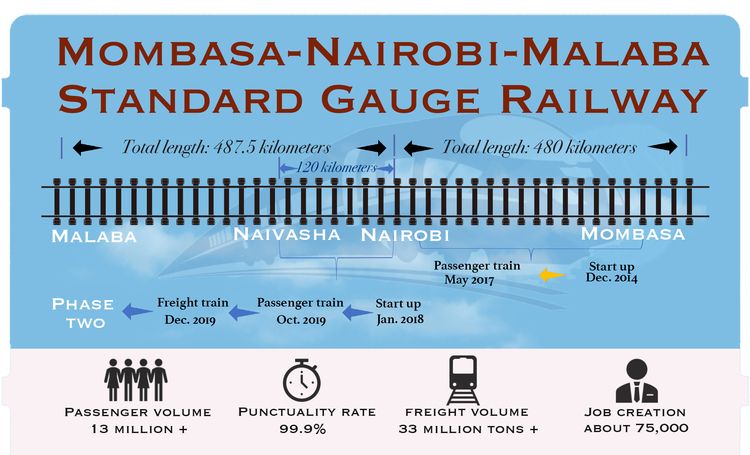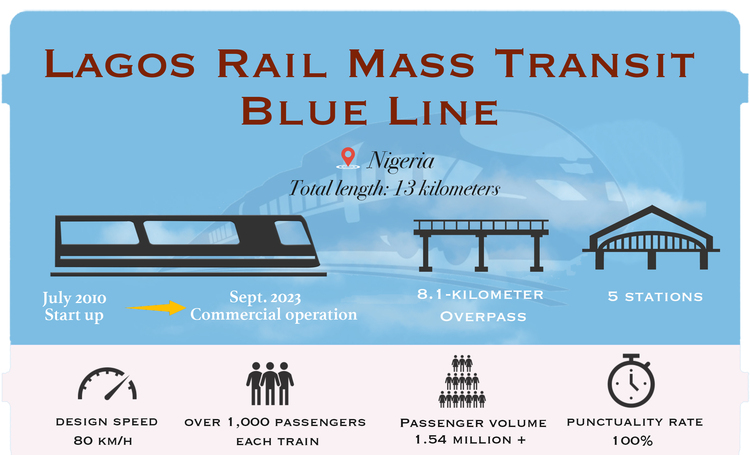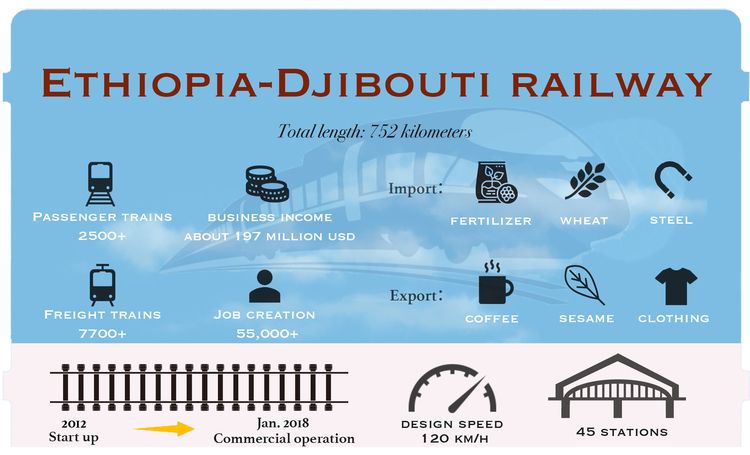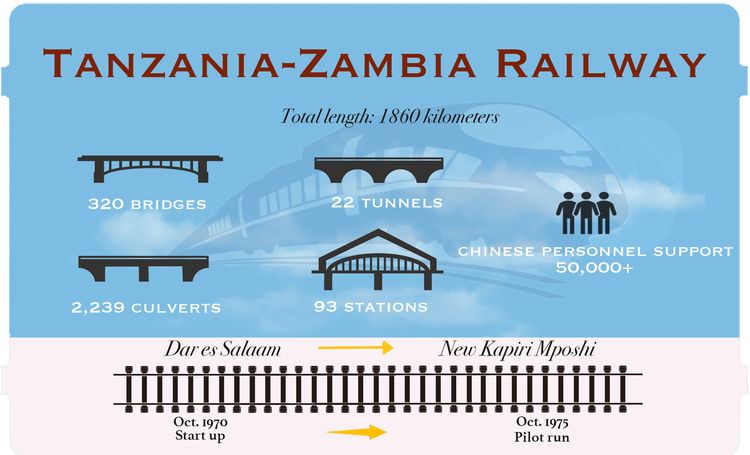"To get rich, build roads first." The popular Chinese proverb rings true in Africa. Drawing on its own development experience, China has been dedicated to working with Africa to build transport facilities crucial for economic development.
THE LARGEST INFRASTRUCTURE PROJECT IN KENYA SINCE INDEPENDENCE

Launched on May 31, 2017, constructed by the China Road and Bridge Corporation (CRBC), the Mombasa-Nairobi Standard Gauge Railway (SGR), linking Kenya’s port city of Mombasa to the capital of Nairobi, has been at the heart of the country’s socio-economic transformation.
The 120km Nairobi-Naivasha railway is an extension of the Mombasa-Nairobi SGR.
Being the first modern railway to be built in Kenya in about 100 years, SGR is a flagship project under the Belt and Road Initiative and is Kenya's largest infrastructure project since its independence in 1963.
The SGR cargo train has become the mode of transport of choice for businesses seeking to move their cargo from the Port of Mombasa to further inland and beyond the borders. According to the data collected in 2023, the SGR trains have contributed to Kenya's gross domestic product growth by 1.5 percent.
FIRST CHINA-BUILT ELECTRIC-POWERED LIGHT RAIL PROJECT IN WEST AFRICA

Undertaken by China Civil Engineering Construction Corporation (CCECC) since 2010 and completed in December 2022, the first phase of the Lagos Rail Mass Transit (LRMT) Blue Line project spans 13 km and covers five stations.
As a symbolic project of the Belt and Road Initiative, the Blue Line project is the first rail infrastructure traversing Okokomaiko, a densely populated area in the western part of Lagos, and Marina, a business district on Lagos Island.
The Blue Rail has reduced travel time, thereby helping to alleviate traffic congestion, improve the quality of life of citizens, and make Lagos one of the most resilient mega-cities in Africa that would compete favorably with other mega-cities around the world.
In addition, the Blue Line is electrically powered, an upgrade to clean energy, thus reducing harmful emissions such as exhaust fumes.
FIRST FULLY ELECTRIFIED TRANS-BOUNDARY RAILWAY IN AFRICA

The 752-km Ethiopia-Djibouti electrified railway, contracted by two Chinese companies, China Rail Engineering Corporation (CREC) and China Civil Engineering Construction Corporation (CCECC), is the first fully electrified transnational railway on the African continent, bringing Ethiopia and Djibouti together.
The railway provides various freight services to locals, including transportation of perishable goods, vehicles, cereals, and fertilizers. Ethiopia, taking advantage of the railway's efficient and speedy service, has built or is building nearly a dozen industrial parks along the rail line to facilitate speedy transportation of industrial exports. At the same time, the railway has also created a large number of job opportunities for locals.
The Ethiopia-Djibouti rail line is a lifeline to landlocked Ethiopia, while also transforming communities along the line in the two Horn of Africa countries, contributing to regional integration.
A RAILWAY SPANNING GREAT RIFT VALLEY IN EAST AFRICA

Built in the 1970s, the Chinese-built Tanzania-Zambia Railway (TAZARA) covers 1,860 kilometers from the Zambian town of New Kapiri Mposhi to Tanzania’s Dar es Salaam.
Since its operation in 1976, TAZARA has become an economic catalyst for eastern and southern African nations. Having transported millions of tons of goods and innumerable passengers since it was put into operation, the railway has greatly contributed to Africa's prosperity.
TAZARA also epitomizes the pragmatic cooperation and long-standing friendship between China and Africa. In the 1970s, more than 50,000 Chinese engineers, technicians, and workers traveled to the nations to help build the railway under extremely difficult conditions. In the past five decades, a total of 70 Chinese people lost their lives when constructing the TAZARA railway and assisting in Tanzania's development, and their names were inscribed at a cemetery in Tanzania.
编辑:韩睿